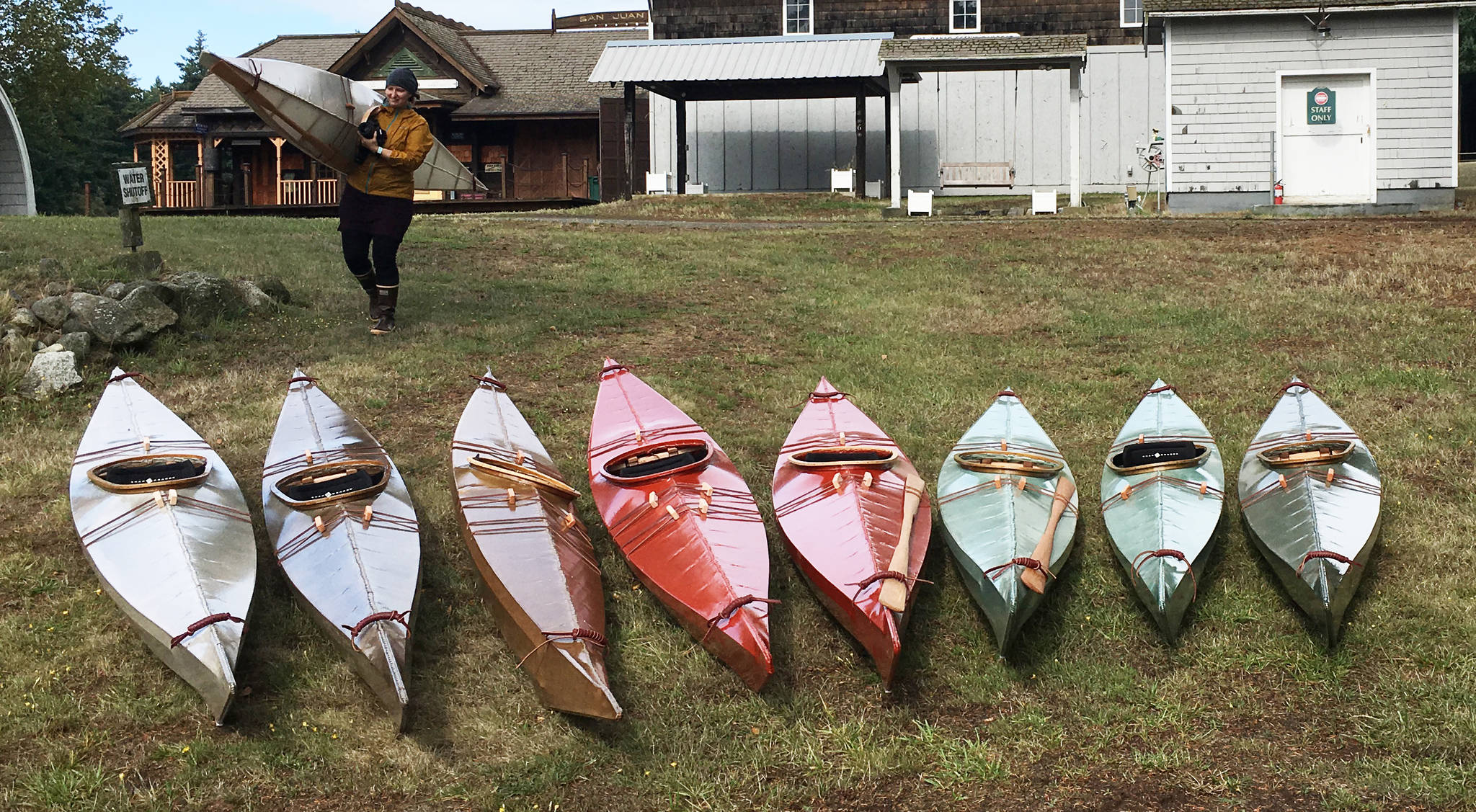Nine new boat builders launched their hand-built creations into Moran State Park’s Mountain Lake on Sept. 15.
The nine intrepid adults were the latest participants in a skin-on-frame kayak building workshop conducted for the third consecutive year at Mt. Baker Farm on the island by Seattle-based SeaWolf Kayaks.
“There’s a lot of interest and excitement for kayak building in the Pacific Northwest,” offers to Addie Asbridge who, with Sea Wolf Kayak founder Kiliii Yuyan conduct workshops around the globe. “And it’s always difficult finding a space that meets our requirements and is financially feasible.
“Orcas is a popular workshop for our students, ” Asbridge adds noting that this year’s students came to the island from as far as British Columbia, Minnesota, California and Nome, Alaska.
“Besides, she offers, “I’m from Snohomish and Kiliii has spent most of his adult life in the Pacific Northwest. After teaching workshops on the east coast, Germany, Finland and the United Kingsdom, Orcas feels like home.”
Using “advanced woodworking techniques, traditional craftsmanship” and hand tools, workshop participants spend nine full back-breaking days building their own skin-on-frame kayak. Prior to attending, each person selects a kayak model that best suits their needs. From the beginner to the experienced, overnight camper to outdoor adventurer, each of the various models all have one thing in common – they weigh less than traditional fiberglass or plastic boats.
Orcas Island resident Poke Haffner, the only islander at this year’s workshop, is thrilled with the idea that she can carry and launch the boat herself with no additional equipment or assistance.
“I own two other kayaks,” she said, “and this one – the only one I built myself – is so much easier to carry. It’s beautiful and I love it.”
Under the tutelage of Asbridge and veteran boatbuilder and designer Yuyan, neophyte kayak makers cut and steam-bend wood to create the boat’s skeleton. The elements are then lashed together using no metal, and the skin – ballistic nylon – is sewn on by hand using the traditional Greenlandic style. Haffner chose a red cedar for her frame and an iron oxide for the polyurethane finish on the skin. Each attendee also finishes their own paddle, a remodeled Greenland-style paddle which, according to Haffner, uses more of one’s core muscles translating to less stress on arms and shoulders.
“I love how it feels,” explained Haffner. “The boat, not just the paddle.”
According to Asbridge, while students attend the workshops for a variety of reasons, they always take away something they didn’t expect.
“For some, traditional lashing and wood-joinery is a paradigm shift: they can’t conceptualize something out of wood not containing any screws or glue. For others, it may be a deeper understanding of the human Artic, where kayaks originate; for others, it’s the pride of pushing themselves to try something new.
“And because it’s hard, it is rewarding,” adds Asbridge. “It is empowering. And for many, from 16 to 76, it is a life-changing experience.”
Since opening its doors in 2001, Sea Wolf Kayaks have been involved with helping build nearly 600 kayaks in the United States and across the globe. Workshops are by registration only (Orcas Island had a waiting list). More information may be found at www.seawolfkayak.com.



